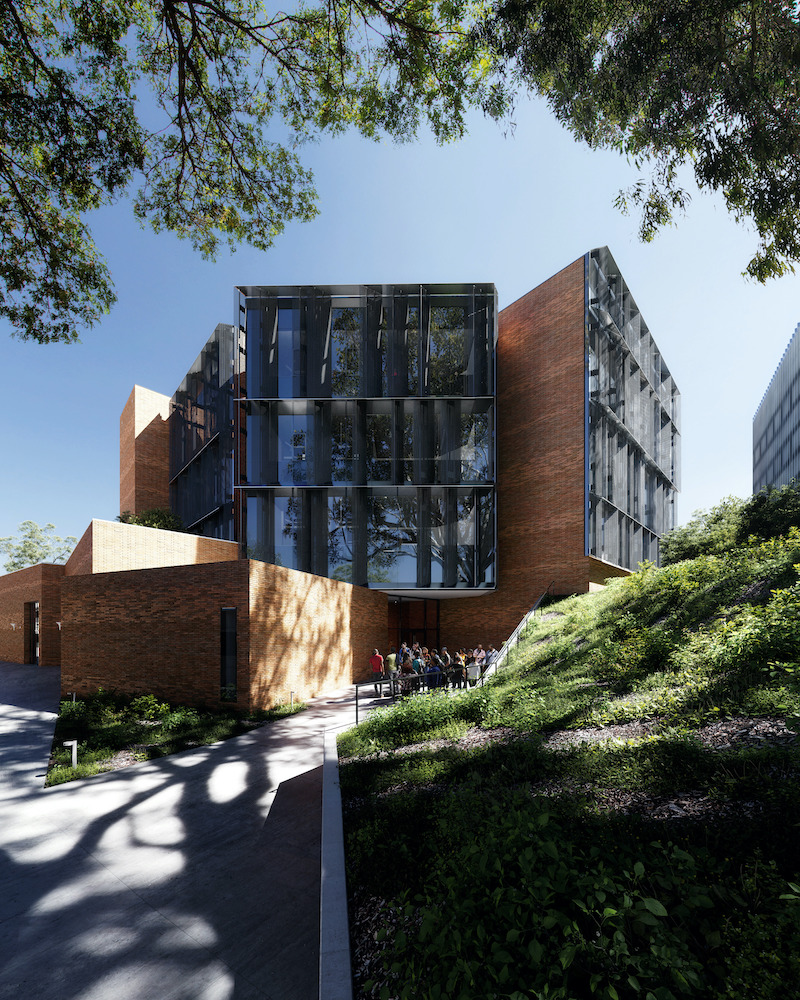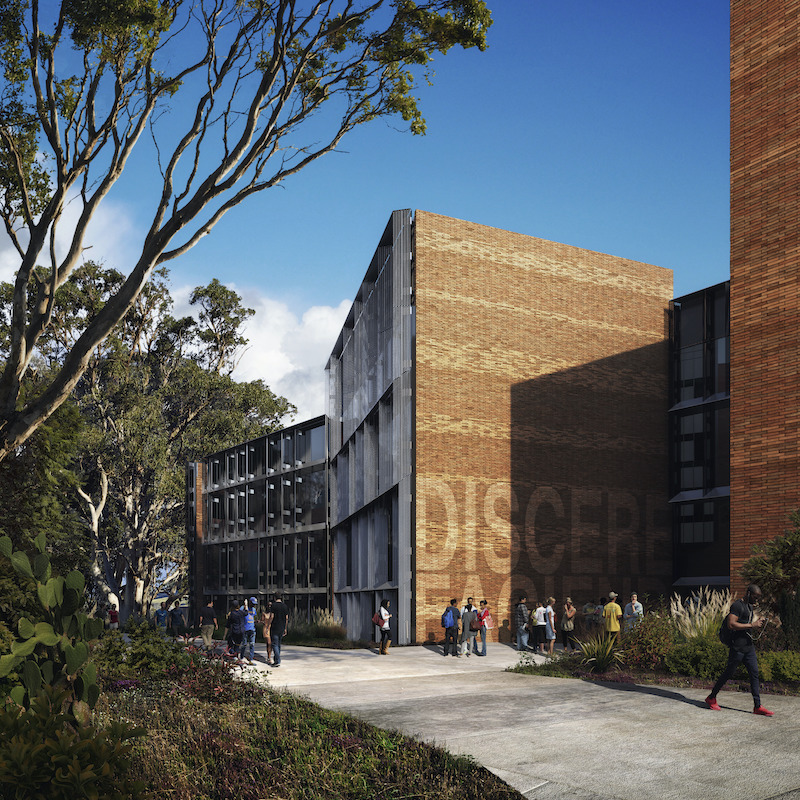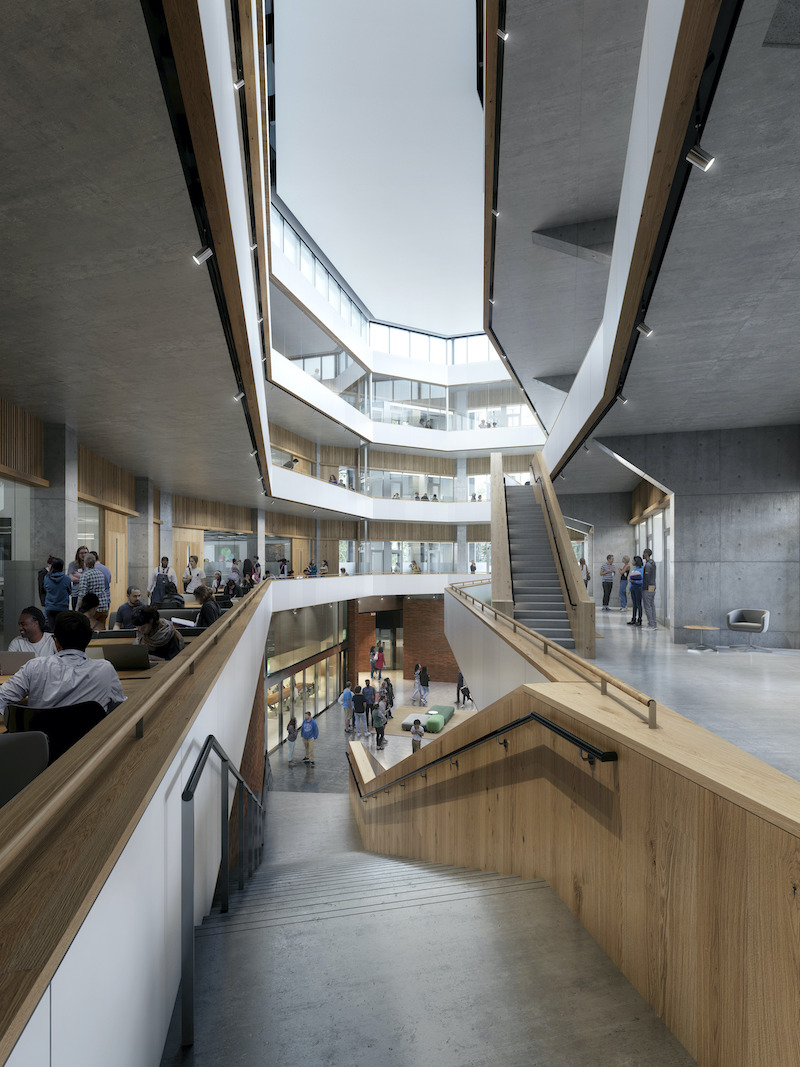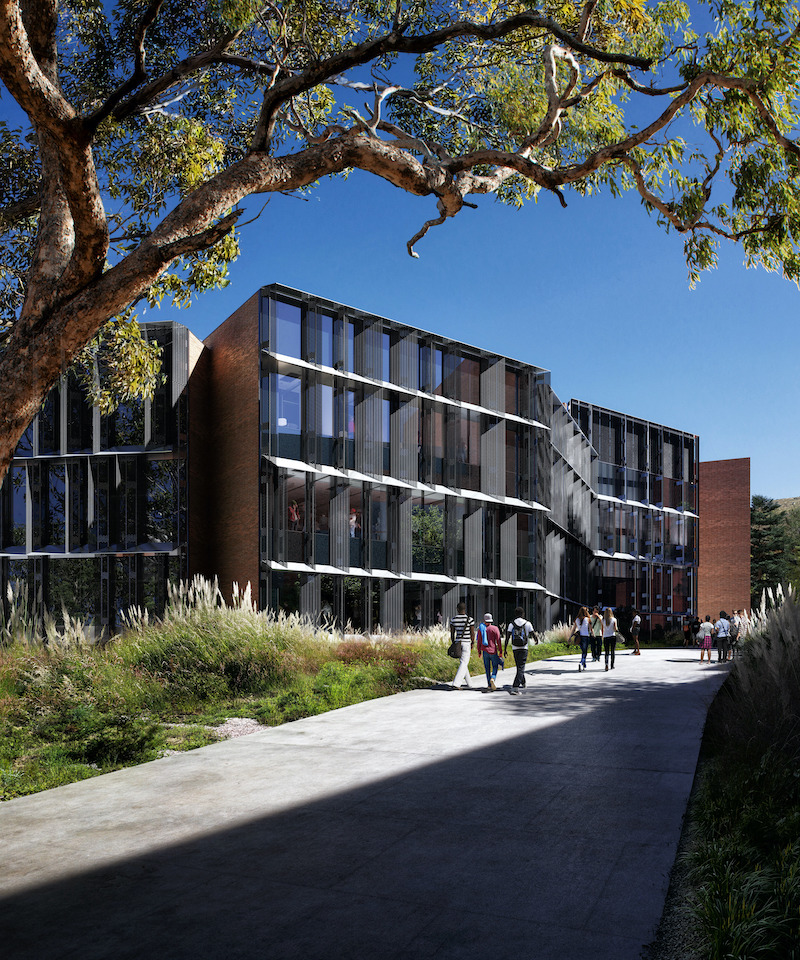Cal Poly San Luis Obispo’s newest addition to its campus, The William and Linda Frost Center for Research and Innovation, is currently under construction.
The four-story, 103,800-sf Center is dedicated to undergraduate students who engage in faculty-mentored research each year and work side-by-side with professors. The Frost Center will bring three colleges together under one roof: the College of Liberal Arts, the College of Science and Mathematics, and the College of Agriculture, Food, and Environmental Sciences. It is designed to support the educational priorities of a growing student and faculty population, promote interdisciplinary communities, and provide academic space.

Included within the building are 19 flexible laboratory and teaching spaces, large general-purpose classrooms, collaboration areas, faculty/staff offices, a recording studio, editing bays, a high-end computer lab, and a teaching kitchen. The teaching kitchen is showcased on the first floor and is highly visible from the atrium.

The modularly planned laboratories provide flexibility for any future changes and can be combined to produce large, open laboratories or subdivided to produce small instrument or special-use laboratories. A “big room” for the College of Liberal Arts will give students a space where they can create, perform, test, record, and display their work for passersby along the adjacent hallways and exterior pathways.
Passive design strategies and natural ventilation will create a healthy building for occupants. 100% outside air from air handling units and operable windows in offices allow the building to avoid the recirculation of air that might provide an avenue for airborne exposure to viruses such as COVID-19.

The project is designed to achieve LEED Gold and includes sustainable features such as passive heating and cooling strategies, will consume 30% less potable water, and will have the capacity to accommodate future rooftop solar panels.
See Also: Apartments and condos occupy what was once a five-story car dealership
The William and Linda Frost Center for Research and Innovation is slated for completion in late 2021.

Related Stories
| Nov 3, 2014
An ancient former post office in Portland, Ore., provides an even older art college with a new home
About seven years ago, The Pacific Northwest College of Art, the oldest art college in Portland, was evaluating its master plan with an eye towards expanding and upgrading its campus facilities. A board member brought to the attention of the college a nearby 134,000-sf building that had once served as the city’s original post office.
| Oct 16, 2014
Perkins+Will white paper examines alternatives to flame retardant building materials
The white paper includes a list of 193 flame retardants, including 29 discovered in building and household products, 50 found in the indoor environment, and 33 in human blood, milk, and tissues.
| Oct 15, 2014
Harvard launches ‘design-centric’ center for green buildings and cities
The impetus behind Harvard's Center for Green Buildings and Cities is what the design school’s dean, Mohsen Mostafavi, describes as a “rapidly urbanizing global economy,” in which cities are building new structures “on a massive scale.”
| Oct 14, 2014
Proven 6-step approach to treating historic windows
This course provides step-by-step prescriptive advice to architects, engineers, and contractors on when it makes sense to repair or rehabilitate existing windows, and when they should advise their building owner clients to consider replacement.
| Oct 12, 2014
AIA 2030 commitment: Five years on, are we any closer to net-zero?
This year marks the fifth anniversary of the American Institute of Architects’ effort to have architecture firms voluntarily pledge net-zero energy design for all their buildings by 2030.
| Sep 24, 2014
Architecture billings see continued strength, led by institutional sector
On the heels of recording its strongest pace of growth since 2007, there continues to be an increasing level of demand for design services signaled in the latest Architecture Billings Index.
| Sep 22, 2014
4 keys to effective post-occupancy evaluations
Perkins+Will's Janice Barnes covers the four steps that designers should take to create POEs that provide design direction and measure design effectiveness.
| Sep 22, 2014
Sound selections: 12 great choices for ceilings and acoustical walls
From metal mesh panels to concealed-suspension ceilings, here's our roundup of the latest acoustical ceiling and wall products.
| Sep 17, 2014
New hub on campus: Where learning is headed and what it means for the college campus
It seems that the most recent buildings to pop up on college campuses are trying to do more than just support academics. They are acting as hubs for all sorts of on-campus activities, writes Gensler's David Broz.















